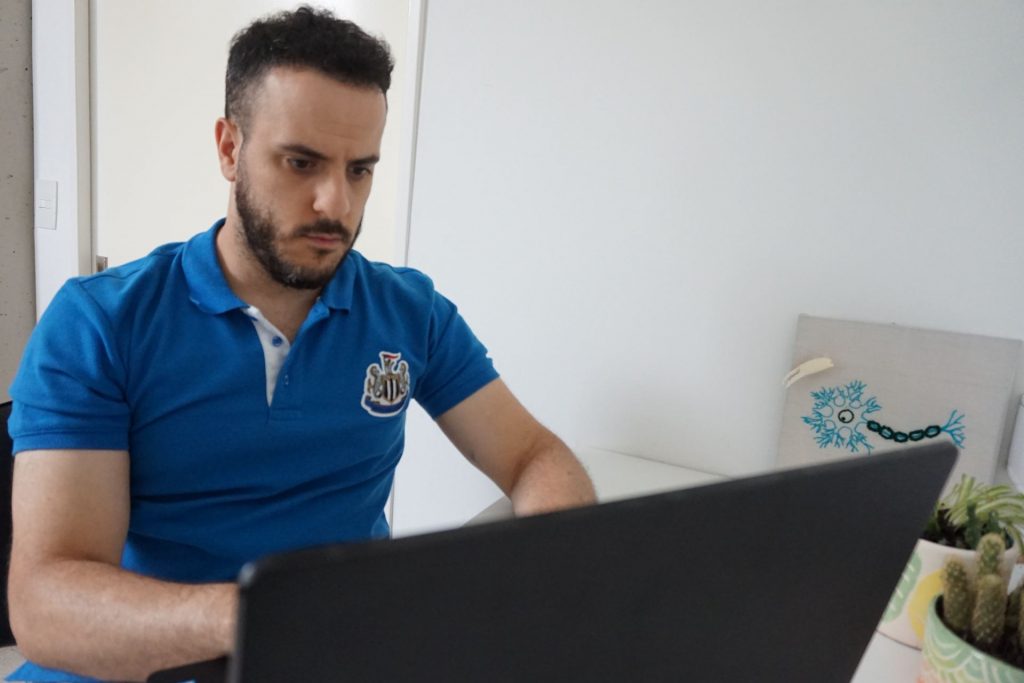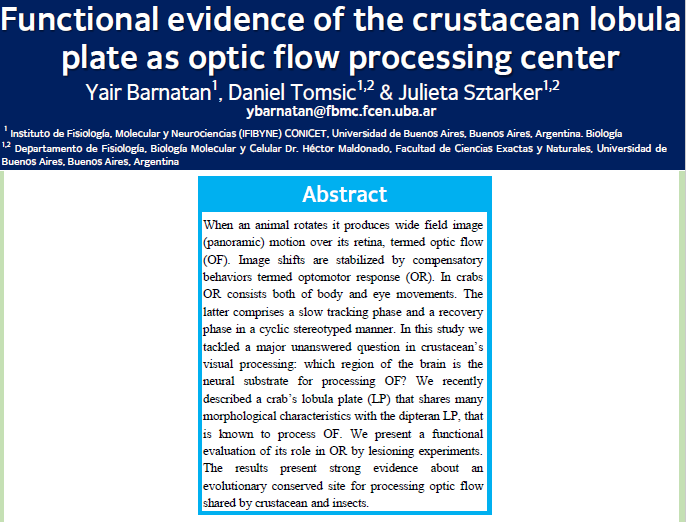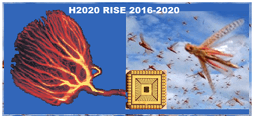Yair Barnatan is an ULTRACEPT PhD student, at the University of Buenos Aires, working in the field of neuroethology. He is currently focused on neuronal processing of optic flow in the crustacean visual system, unravelling which and how neurons are involved in this process.
Yair attended the XXXV Annual Meeting of the Argentinian Society for Neuroscience Research, SAN 2020. This event was held virtually due to the global pandemic from 7th to 9th October, 2020.
This congress covered a wide variety of neuroscience topics, such as sensory and motor systems, neurodegenerative diseases and learning and memory. In that meeting, Yair presented a poster entitled “Functional evidence of the crustacean lobula plate as optic flow processing center” (Barnatan, Y., Tomsic, D. & Sztarker, J.)

Abstract
When an animal rotates it produces wide field image motion over its retina, termed optic flow (OF). OF blurs the image compromising the ability to see. Image shifts are stabilized by compensatory behaviors collectively termed optomotor response (OR). In most vertebrates and decapod crustaceans such reflex behavior involves mainly eye movements that consists in a slow tracking phase of the wide field image motion followed by a fast-resetting phase. We used the mud crab Neohelice granulata to tackle a major question in crustacean’s visual processing: which region of the brain is the neural substrate for processing OF? It has long been known that dipteran lobula plate (3rd optic neuropil) is the center involved in processing OF information. Recently, a crustacean lobula plate was characterized by neuroanatomical techniques, sharing many canonical features with the dipteran neuropil. In this work we present a functional evaluation of the role of crab’s lobula plate on the compensatory eye movements to rotational OF by performing electrolytic lesion experiments. We show that lesioning the lobula plate greatly impairs OR while keeping intact other visually guided behaviors, such as avoidance response upon an approaching stimulus. Even when OR is present in some lobula plate lesioned animals, these show reduced speed of eye tracking. Altogether, these results present strong evidence about an evolutionary conserved site for processing optic flow shared by crustacean and insects.

